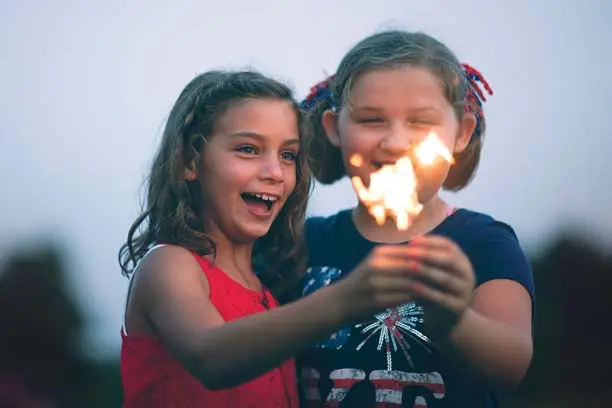10 Fireworks Safety Tips for a Fun Fourth of July


Parades, barbecues and fireworks displays are all synonymous with Fourth of July fun. After all, would it really feel like the Fourth of July without a good fireworks show? If you’re not going to a professional show and are planning to fire them off in your own backyard or other location instead, it’s important to plan ahead and take extra safety precautions to avoid hazards.
Fireworks hold a high risk for serious burns, fires and eye injuries. In fact, fireworks are responsible for roughly 11,000 emergency room visits in the U.S. each year. Of those, 74% occur in a one-month span from June 18 to July 18.
These 10 firework safety tips can help prevent you, your family members and your friends from getting hurt.
Legal fireworks have a label with the manufacturer’s name and directions. Often, illegal fireworks are unlabeled. Fireworks that are packaged in brown paper are made for professional displays. Be responsible and avoid buying these.
Nearly half of all fireworks injuries are sustained by children and adolescents, so it is important to keep children under adult supervision at all times when fireworks are in use. Though they might not seem very dangerous, sparklers burn extremely hot. In fact, sparklers can reach temperatures of 1,800 degrees and easily ignite clothing. Teach children firework safety early and keep a close eye on children at events where people are lighting fireworks. If you’re looking for a fun alternative to sparklers, try glow sticks instead!
Wait at least 20 minutes before handling a “dud” that didn’t go off. Then, douse it with water and let it sit for another 20 minutes. Next, submerge the firework in water and allow it to soak. After the firework is thoroughly soaked, it is safe to dispose of it.
Fireworks produce loud noises that can scare your pets. If you have a pet that escapes or harms itself or others if frightened, put the pet in a secure, safe place in the house.
Have a hose, buckets of water or a fire extinguisher nearby. When using fireworks, assign one person the duty of operating the water or fire extinguisher should something go wrong.
Part of practicing firework safety is making sure the area you’re using to ignite fireworks is clear of any obstructions. Also, avoid using fireworks in areas of dry, potentially flammable grass, wood or debris. It’s also a good idea to monitor your state’s wildfire warning to ensure there isn’t a fire weather watch in effect. These types of warnings occur during extended periods of dry weather and higher-than-average wind speeds.
Knowing how to store fireworks is an important part of fireworks safety. If possible, use them soon after purchase to avoid storing fireworks for extended periods of time. If you do need to store fireworks, keep them in a non-flammable container in a cool, dry place such as a basement or closet. Fireworks should never be stored in a location where they can be unintentionally ignited, such as near a heat source like a water heater or propane tank. Likewise, fireworks go bad when exposed to moisture, making them unsafe to use. Finally, make sure stored fireworks are secured so they can’t be accessed by curious children.
Once a firework is used, it should be allowed to rest for 15-20 minutes. Then, place the used firework in a bucket of water to soak thoroughly. After the rest period and soak period, they can be safely disposed of in a regular trashcan.
After you’ve lit a firework, it’s important to stand a safe distance away. One of the biggest hazards of fireworks are their potential to burn your hands, face and eyes. Do not lean over fireworks or stand too close. This is important because fireworks can sometimes malfunction, resulting in a delayed launch. It’s recommended that all spectators keep a distance of 30 feet from all fountain-style fireworks or anything that emits sparks. For aerial fireworks, like mortars or bottle rockets, a distance of 100 yards is recommended.
The best fireworks safety tip? Attend a professional firework show instead of putting one on yourself. Professional shows are impressive and use pyrotechnics that you can’t buy in stores. Professionals also know exactly what fireworks safety tips to observe and what needs to happen to keep people safe.